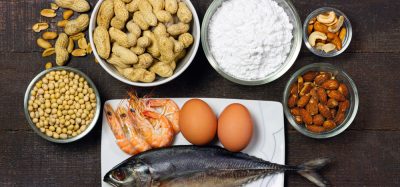The Future of Food Labelling
- Like
- Digg
- Del
- Tumblr
- VKontakte
- Buffer
- Love This
- Odnoklassniki
- Meneame
- Blogger
- Amazon
- Yahoo Mail
- Gmail
- AOL
- Newsvine
- HackerNews
- Evernote
- MySpace
- Mail.ru
- Viadeo
- Line
- Comments
- Yummly
- SMS
- Viber
- Telegram
- Subscribe
- Skype
- Facebook Messenger
- Kakao
- LiveJournal
- Yammer
- Edgar
- Fintel
- Mix
- Instapaper
- Copy Link
Posted: 1 September 2017 | Sarah Howarth | No comments yet
The dust has barely settled from the implementation of the Food Information for Consumers Regulation (EU) No. 1169/2011 (EU FIC Regulation) and we are already seeing new developments across Europe with the potential to impact future food labelling. In this article Chartered Scientist and Fellow of the Institute of Food Science & Technology Sarah Howarth explores the current status of European food labelling, touch on the various national member state initiatives and question what the future might bring.


EU FIC Regulation entered into application on 13 December 2014 with the obligation to provide nutrition information applying from 13 December 2016. As a result of the new regulation, all food labels in the UK required amendments.
Key labelling changes included the following:
- Minimum font size for mandatory information
- Presentation of allergens in the list of ingredients
- Mandatory allergen information for loose and pre-packed for direct sale goods
- Requirement for certain nutritional information for the majority of prepacked processed foods
- Mandatory origin information for fresh meat from pigs, sheep, goats and poultry
- Labelling requirements for online, distance-selling
- List of engineered nanomaterials in the ingredients
- Specific information on the vegetable origin of refined oils and fats
- Clear indication of “formed meat” or “formed fish”
- Clear indication of defrosted products.
The primary objective of the EU FIC Regulation was to provide more information to consumers enabling them to make healthier choices and ensuring free trade across Europe. As various studies continue to show, we are on an upwards unhealthy trend and the rates of dietary related health complications being linked with being overweight or obese are on the increase.
In a very small ad hoc survey I asked a group of consumers about their thoughts on food labelling. The most useful and widely used piece of information on the label was considered to be the date code information. Comment was also made on how helpful it is that you “can find everything” on the label, particularly if you have special dietary needs.
These findings appear to be supported in the much more robust study commissioned by Food Standards Authority of Ireland (FSAI) (Dec 2009), which found that the minimum durability date was rated as the most valuable piece of information. The study went on to reveal that half of consumers never, rarely or only sometimes read food labels and the proportion of consumers who always consult food labels are around 25% – having risen from 8% in 2004. It appears those groups looking to obtain specific information on the allergens, nutritional content, or ingredients are most likely to consult labels.
Design
We are constantly being bombarded with a stream of food related news and information that is often contradictory and confusing for consumers. Indeed, sensational food news headlines are often seen as an effective way to attract media attention. So how do we meet the challenge of designing the optimal food label?
More recently, in December 2014 the TNS Study was published, which was designed to explore the impact of food labelling in relation to consumer purchasing decisions in the specific areas that were beyond the current scope of EU FIC Regulation.
The areas researched were as follows:
- Trans Fatty Acids
- Precautionary allergen labelling
- Date marking and the relationship with food waste
- Country of Origin labelling of primary ingredients
- Alcohol labelling.
Conclusions from the TNS Study showed the impact of food information on consumers’ decision making to be as follows:
- Overall introduction of TFA levels did not lead to healthier choices
- ‘May contain’ was effective in driving more cautious choices among allergy affected consumers
- A misunderstanding of “best before” is likely to be contributing to food waste
- Country of Origin labelling of primary ingredients did not appear to have a positive effect on healthier food choices
- Alcohol labelling: Calorie and healthy limit information appeared to impact behaviour.
Developments across Europe in food labelling
Looking across the EU we are seeing a number of initiatives being instigated by individual Member States with an increase in Country of Origin Labelling (COOL) being the most popular.
Current member state initiatives include the following:
- Proliferation of national Country of Origin Labelling (COOL)
- Reviews on the presentation of nutritional information
- Voluntary codes for additional information on alcoholic products
- Review of date marking in relation to food waste
Under Article 39 EU FIC Regulation, member states are allowed to adopt national measures relating to: Protecting public health; the protection of consumers; the prevention of fraud; COOL measures if there is a proven link between certain qualities of the food and its origin or provenance.
Article 45 outlines the notification and approval procedure to be followed in instances where member states wish to introduce mandatory national measures.
France, Portugal, Spain, Romania, Italy, Greece, Finland and Lithuania have decided to run research on COOL labelling for certain types of food products, such as milk and meat, when they are used as ingredients in food or dairy products.
Some of the research has already been approved by the commission subject to publication of the research findings and mutual recognition of EU labels.
Labelling
Then there is the subject of presentation of nutritional information: In the UK, we have the voluntary colour coded nutritional food label scheme linked to the level of nutrients present in the food. France has also introduced a voluntary colour rating scheme and Sweden is looking to implement a Keyhole logo system.
Finally, there is the subject of alcoholic beverages. The EU FIC Regulation exempts alcoholic drinks above 1.2% abv from mandatory labelling with the provision for voluntary energy declaration. In the UK, retailers in coordination with BRC have launched a voluntary best practice aimed at increasing awareness and improving responsible drinking.
In the UK, WRAP have launched a review of date labelling and storage guidance with the aim of reducing household food waste.
The EU FIC Regulation has led to a major review of all food and drink labels with the final piece on mandatory nutritional labelling being applicable from December 2016. Barely has the full implementation date passed and we are seeing several EU member state initiatives that have the potential to lead to future labelling proliferation. Key questions remain for policy makers seeking to influence consumer purchasing decisions regarding the design of food labels: What is enough information and what is too much? Are symbols clearer than words?
The contribution that the new labelling presentation will make in reducing overweight and obesity levels across Europe is currently unclear. What we do see from research, however, is that the date of minimum durability is considered by consumers to be one of the most valuable pieces of information on packaging and for those with special dietary needs the additional information provided is considered helpful.
Globally the trend appears to be a move toward mandatory nutrition labelling. The Codex guidelines were amended in 2012 to recommend that nutrition labelling should become mandatory, even in the absence of health claims. Many countries that had a voluntary approach to nutrition labelling have in recent years adopted measures to make this mandatory.
Challenges lie ahead as we approach Brexit and consider what the future may look like. How will the various member state initiatives impact future labelling? How can we improve the health of the nation and at the same time facilitate trade in a harmonised way on a global level?
Biography


References
- Regulation (EU) No 1169/2011 on the provision of food information to consumers. (Dec 2016) https://ec.europa.eu/food/safety/labelling_nutrition/labelling_legislation_en
- TNS European Behaviour Studies Consortium. Study into consumer behaviour and decision making relating to food labelling (Dec 2014) https://ec.europa.eu/food/sites/food/files/safety/docs/labelling_legislation_study_food-info-vs-cons-decision_2014.pdf
- European Food Information Council Global Update on Nutrition Labelling (Feb 2016) http://www.eufic.org/images/uploads/files/ExecutiveSummary.pdf
- European Flabel Research program on Nutritional Labelling (Jan 2012) http://www.flabel.org/en/
- Department of Health Technical guidance on nutritional labelling (Sep 2016) https://www.gov.uk/government/uploads/system/uploads/attachment_data/file/595961/Nutrition_Technical_Guidance.pdf
- BRC Drink awareness (Mar 2017) https://brc.org.uk/news/2017/uk-retailers-unveil-revised-alcohol-label-to-encourage-more-responsible-drinking
- WRAP review of date labelling and storage guidance (May 2011) (http://www.wrap.org.uk/sites/files/wrap/Technical%20report%20dates.pdf





